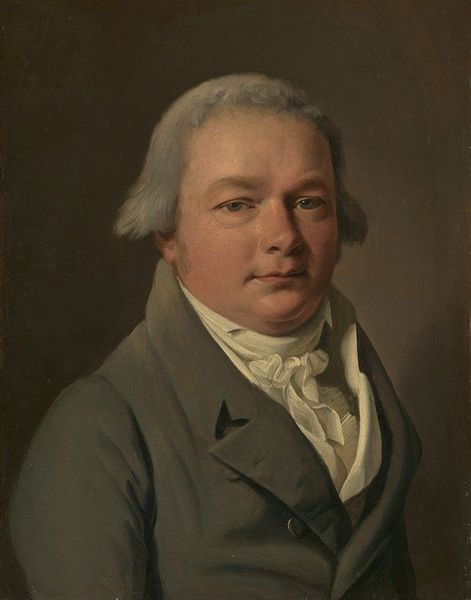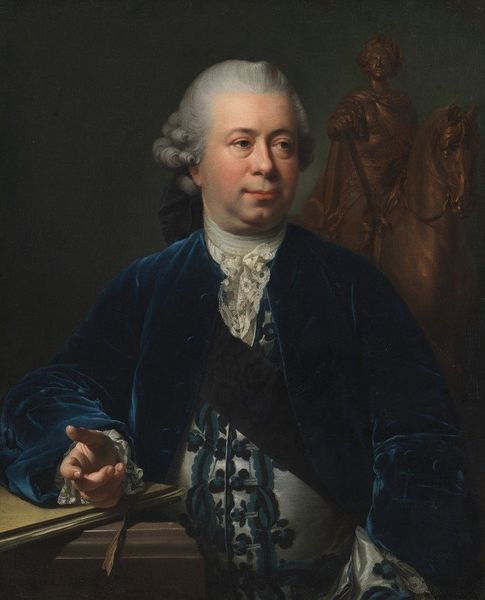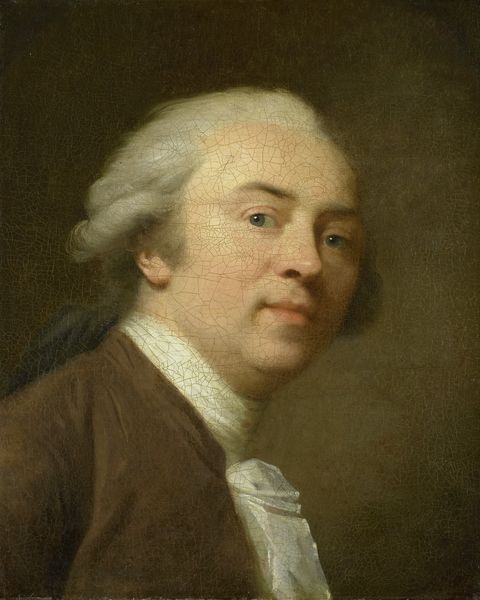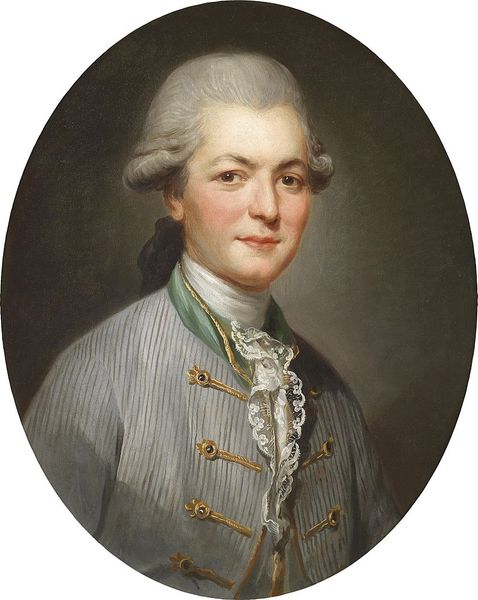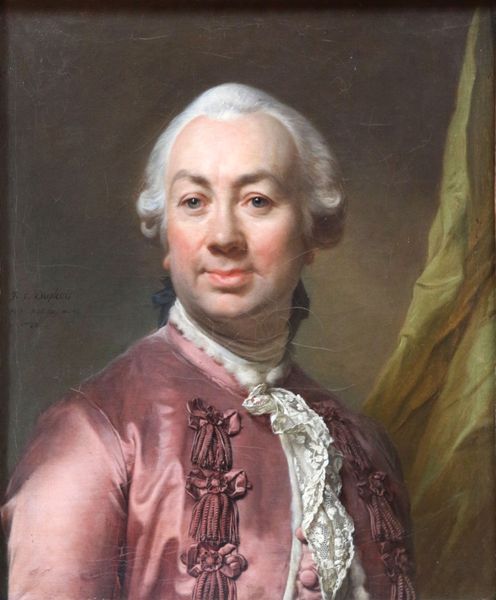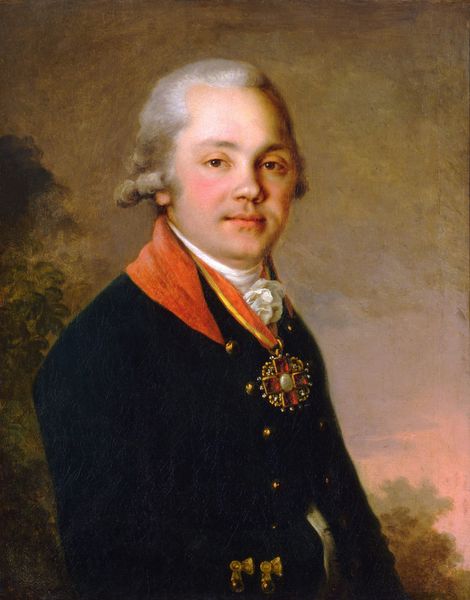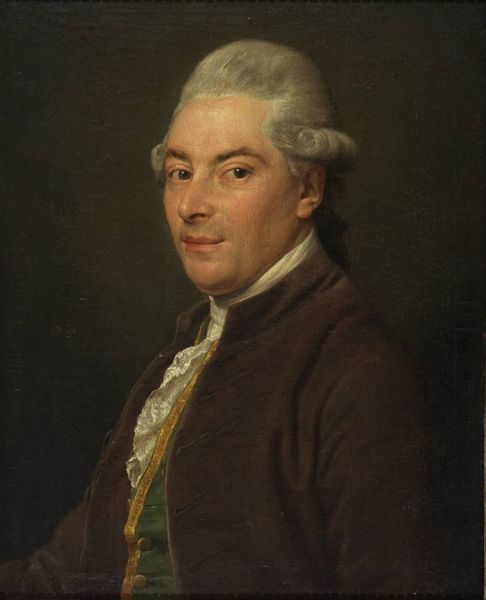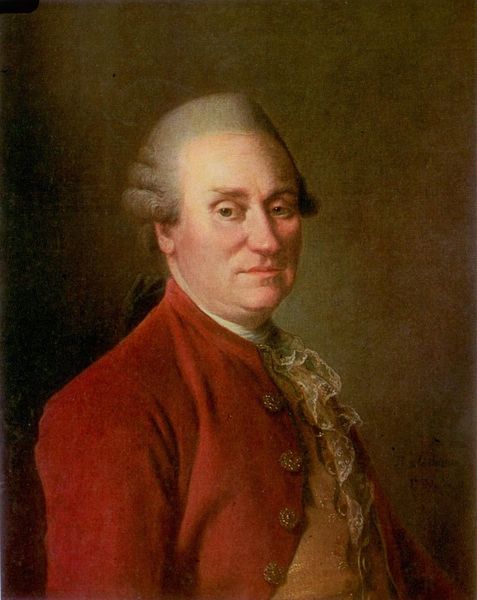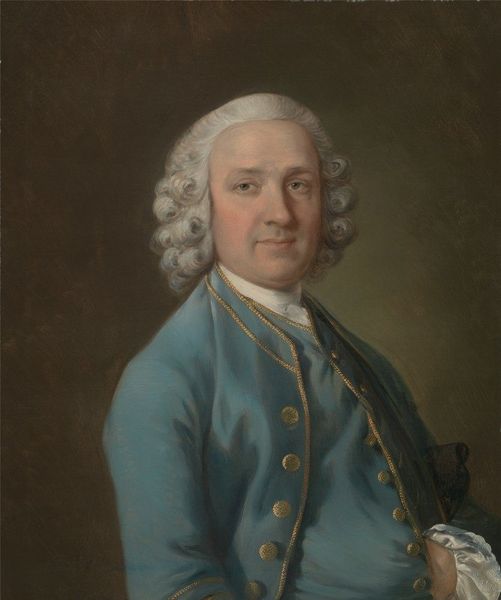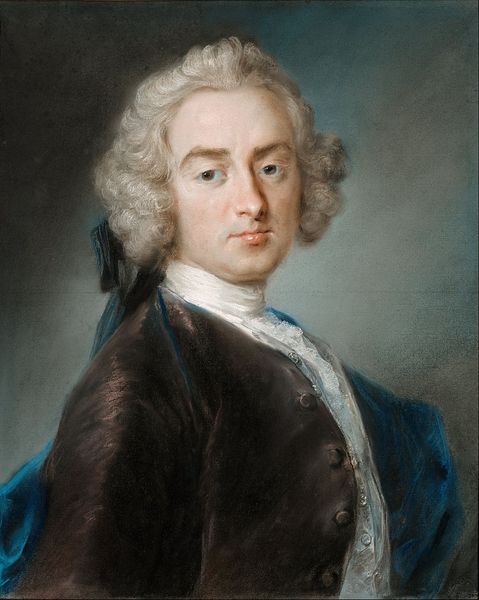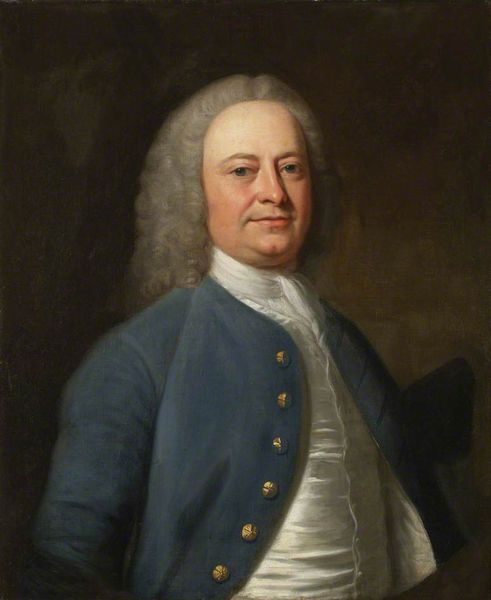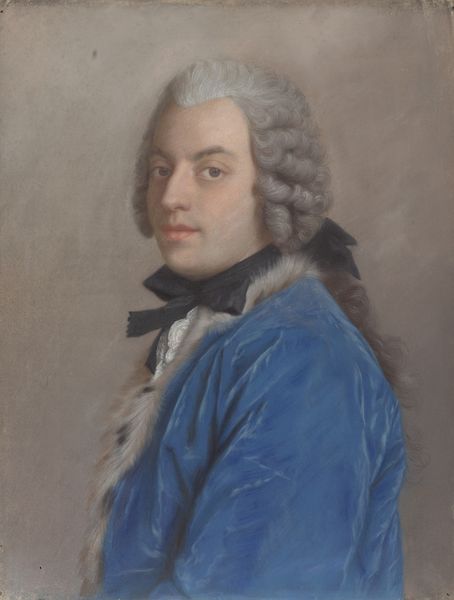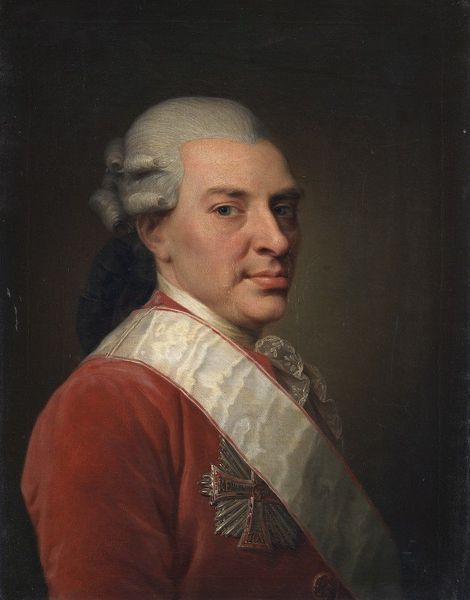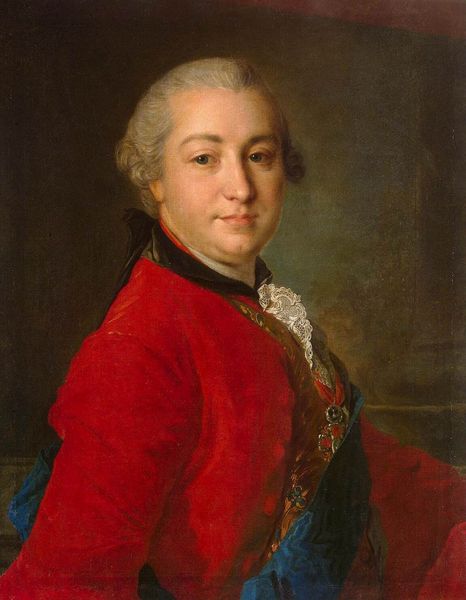
Copyright: Public domain
Curator: This is "A Portrait of James Bruce of Kinnaird, Explorer," completed in 1762 by Pompeo Batoni. Currently, it resides here at the Scottish National Gallery in Edinburgh. Editor: He looks every bit the privileged explorer! I'm immediately struck by the confidence in his gaze and the sheer opulence of that coat. The dark blues contrast beautifully with the almost theatrical whiteness of his powdered wig and lace. Curator: Batoni was highly sought after by wealthy British travelers on the Grand Tour. The portrait served as a status symbol, proof of their cultural refinement and access to the elite circles of Europe. This particular portrait captures Bruce before his more famous explorations of Africa. It projects the image of an educated gentleman of leisure, soon about to embark on a noble adventure. Editor: I wonder how much agency James Bruce actually had over the presentation of himself. I mean, that coat...it’s clearly making a statement about power and class, but at whose direction? Was Batoni merely a talented executor of Bruce's vision, or was he also complicit in upholding and performing the rituals of colonial power and patriarchal hierarchies? Curator: The art world of the 18th century existed as part of, and bolstered, those very structures. This work would have helped shape Bruce's image as an adventurer in the public eye. It presents a sanitized version, certainly. Think about the tradition of portraiture during this period; what purpose it served to convey messages and ideas through iconography. Editor: Exactly! Think of the other images being propagated in Europe at the time, romanticizing colonial ventures while often dehumanizing and demonizing the people in Africa. This is academic art that naturalizes an order steeped in social injustice. It really highlights the ways art institutions play a part in normalizing these historical narratives. Curator: Still, Batoni's skill is undeniable. Look at the way he captures the textures, from the velvet of the coat to the delicate lace. Editor: Of course, that technical mastery is precisely what made Batoni such a successful instrument in reinforcing dominant ideologies. The exquisite detailing and flattering portrayal only amplify its effectiveness! Seeing this piece in person only reinforces to me the importance of constantly re-evaluating the values and biases that underlie canonical artworks and the museum practices they are subject to. Curator: I appreciate you bringing to light how complex interpreting historical artworks truly is. The act of observing becomes active; through the present context it continues the original goal.
Comments
No comments
Be the first to comment and join the conversation on the ultimate creative platform.
